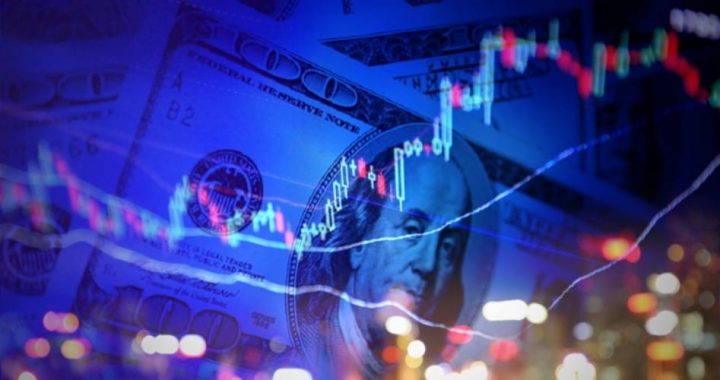
Economic forecasters really ought to get out more. As recently as March, many were saying that the U.S. economy for all intents and purposes had stalled in the first quarter of 2019. They blamed the government shutdown, something called the “wearing off” of the economic stimulus provided by Trump’s Tax Cuts and Jobs Act, and of course, the weather. The consensus of Blue Chip economists yesterday was first quarter growth of 1.5 percent while economists polled by MarketWatch were slightly more optimistic, at 2.3 percent.
Instead, the U.S. economy astonished them all. According to the Bureau of Economic Analysis (BEA), the U.S. economy grew at an annualized rate of 3.2 percent in the first quarter of 2019. The BEA noted that the economy continues to fire on all cylinders: “The increase in real (inflation-adjusted) GDP in the first quarter reflected positive contributions from personal consumption expenditures, private inventory investment, exports, state and local government spending, and non-residential fixed investment.”
As a bonus, the BEA also reported that inflation remained tame, with price increases coming in at 1.3 percent on an annualized basis. Also noted was the fact that the government shutdown took 0.3 percent growth out of the economy in the first quarter. In other words, the economy is even stronger than the BEA reported.
Typical perhaps of one of those Blue Chip economists is John Lonski, who appeared on Fox Business on Friday morning just as the BEA report was released. Lonski is the managing director and chief capital markets economist of Moody’s Analytics. He was cited as the most accurate forecaster during the four years ending in 2013. Earlier he enjoyed the same appellation from the Wall Street Journal in June 2004. He is so highly regarded that he participates in a number of polls, including those taken by the Wall Street Journal, Bloomberg News, Reuters and the prestigious Philadelphia Federal Reserve’s Survey of Professional Forecasters.
All of this is to say that somehow Lonski appears to have lost his touch. On Fox Business he laughed off his miss — he was predicting first-quarter growth of just 0.5 percent as recently as a month ago.
Lonski has lots of company. In addition to the Blue Chip consensus coming in at half of what the BEA reported, the Atlanta Federal Reserve’s “nowcast” of the economy, which estimated first-quarter growth at just 0.3 percent in early March, tried to play catchup ball as new numbers started coming in. Nevertheless, the Atlanta Fed’s GDPNow estimate for the first quarter of 2019 still missed the mark, coming in at 2.7 percent.
The future looks equally rosy, and equally likely to continue to embarrass those worthies whose job it is to sit in front of their computer screens and pontificate about the future of the U.S. economy. First, the first quarter is historically the weakest quarter of the year. Secondly, the strong growth in inventories in the first quarter bodes well as businesses are expecting the demand for their products to continue well into the future. Thirdly, durable goods orders — for products with a life span of at least three years — jumped to record levels in March. In addition, the BEA reported that much of the growth in the first quarter was fired by an increase in exports, which helped close the trade gap that many worry about. Retail sales also grew nicely in March, along with real (after-tax) wages.
The consumer, responsible for much of GDP, is happy. According to the University of Michigan, consumer sentiment remains at record levels, while consumer long-term financial outlook has reached its highest level since 2004 — 15 years ago.
As the economic expansion enters its 10th year — also a record — the economists tracking its rebound are still lagging behind. Just as the economy appears to be getting its second wind, economic forecasters are huffing and puffing just trying to keep up.
Image: honglouwawa via iStock / Getty Images Plus
An Ivy League graduate and former investment advisor, Bob is a regular contributor to The New American, writing primarily on economics and politics. He can be reached at [email protected].



